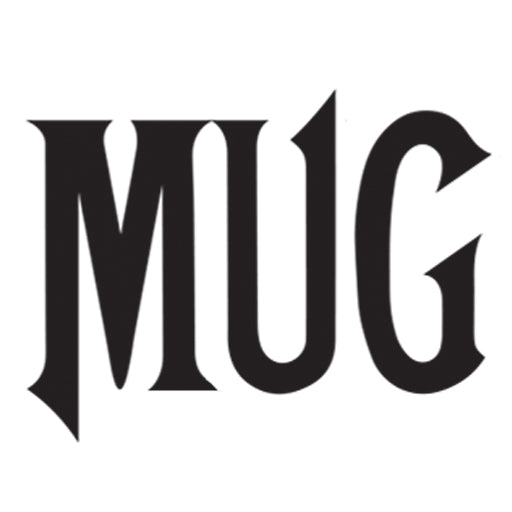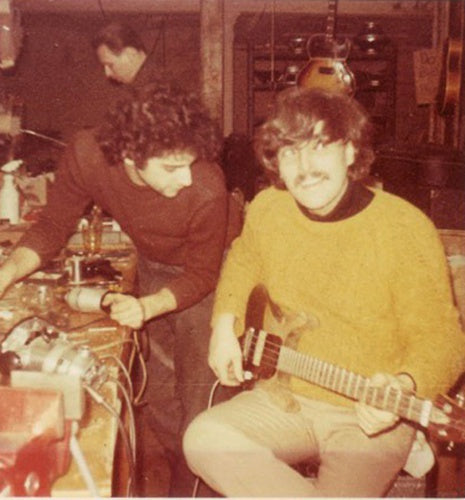Here I am, fifty years later, still at it, still repairing and restoring quality fretted instruments, still buying them, and still making sure they’re in top-flight condition in every way and sending them to new homes. And I’m still having one heck of a good time appreciating them and making people happy with them. With the coming of the new year, one often reflects on one’s past, and one of the hugely influential persons I’ve been thinking about is Danny Armstrong, he of the Plexiglas electric guitar fame, and all that he did that he never got credit for in our industry and for our music.
In the mid-1960s Danny had a small shop, really just a very small office space, on an upper floor of a building near what was then called Music Row on W. 48th Street here in Manhattan near Manny’s, Sam Ash, and several other retail music stores. In the mid-late 1960s Danny was known as a hot-rodder of electric guitars, initially souping up those inexpensive Danelectros (no relation to him though) and later making special circuits and pickups for Gibson Les Pauls and the like. He did all this at his desk in that uptown space; his ideas sure did work and he got the attention of and became friendly with all the top rock guitar players of the day. One of those was Eric Clapton, who Danny introduced me to back then and for whom Danny later asked me to repair a broken peghead on Eric’s Favorite Les Paul. I was maybe 19 or 20 at the time and known as the hotshot repair kid in NYC; Danny and Eric would trust that job to no one else and the story had quite an unusual ending, but more about that in a later Newsletter.
Just one of the things Danny did in those years that revolutionized our guitar world was locating and selling older Gibson electric guitars for more than new ones sold for, claiming that they were just plain better. This had been going on for years in the acoustic guitar world but Danny was the first guy who, in the '60s, said that ten-year-old Les Pauls were better than new ones, and was he ever proven right decades later when the prices of those guitars went way past $100K. By 1968 or so, Danny had opened a real store here in Greenwich Village, on La Guardia Place. This was before I ever opened a store of my own; I had had repair shop space in a few consecutive locations in lower Manhattan. Sometime around 1967, Danny asked me one day if I could make an entire solidbody electric guitar with a Plexiglas body. Piece of cake to me, I said, and it was, and it sounded like fun, so I went over to his place and he showed me a rough drawing of a body shape (I still have the drawing). What do you want for a neck shape? Whatever you want. Peghead design? Whatever you like (I still have the drawing I made for that too). The body needs some bevels on it, ya think? Sure, whatever you like, And on an on; Danny was always brilliant with new ideas, but fleshing out the finer points was not exactly his forte and so I designed all the detail work on those guitars and basses my own self. As it turned out, several months later, when I was almost finished with the original prototype guitar (and bass), I was suddenly without shop space, needed to vacate where I had been. Danny graciously offered me space in his store to run my own business, with no rent other than to occasionally repair for him one of the tougher jobs that came his way. The photo you see here is of Danny and me, holding the first Plexi guitar, at my workbench in his store. In the background is Eddie Diehl, a wonderful jazz guitar player working at Danny’s at the time. Sadly, Danny passed away in 2004, Eddie last year.
There’s more about Danny though, who most surely never got anywhere near his due in our guitar players' world. As previously mentioned, he had brilliant ideas but always delegated seeing them through to others while rarely getting any credit for them, let alone monetary rewards. For example: Walk into a music store today, say Gimme set of .010s? Far as I know, you couldn't do that, get a 10-46 set already packaged, before Danny. What we useta do was to take a 13-56 set, throw away the 6th String, move the rest of them up one space and substitute an .010 banjo string for the first and presto, an .010 set, eventually sold already packaged, with an Armstrong label. Also: While you could buy a distortion pedal of one brand, an envelope follower of another, it was Danny who came up with the idea of having a whole integrated line of different effects pedals, all with similar look but in different colors and names like Orange Squeezer, Blue Clipper, Red Ranger, more, all of them able to be plugged into each other. May sound like old hat today but before Danny, you just couldn’t do that.
Danny was not only hugely helpful to me when I was coming up but a hero in an entire world that I knew little about back then, electric guitars. When I finally opened my own store in 1969 and was deciding what to call it, rather than going for something like New York Music or Greenwich Village Guitars, I thought to myself Hey, Danny did it with Dan Armstrong Guitars, sounds like a pretty good idea to me, think I’ll go with Matt Umanov Guitars and here I am, fifty years later, still at it. Thanks, Danny, for so much.



